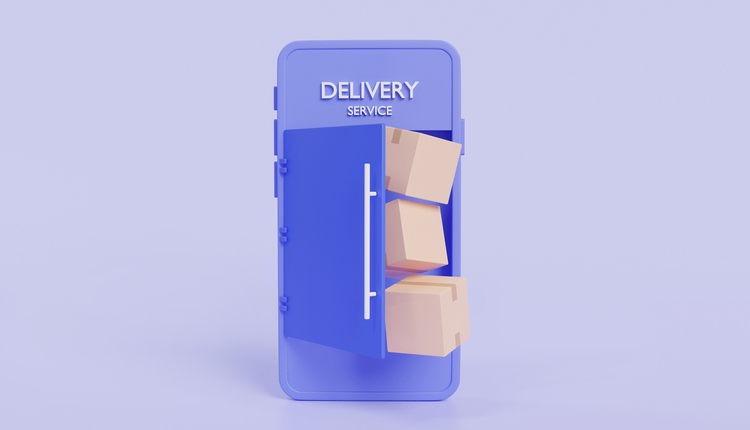The global economy is an enigma right now, with the impact of inflation on supply chains a key part of that mystery. Thanks to the pandemic over the past few years, the industry has seen more than its fair share of turbulence. There’s also been supply chain concerns, a geopolitical struggle between Ukraine and Russia, and many other unpredictable events. Times have been tumultuous.
Now, amid record-high inflation, all of those issues are creating a strange series of events in the supply chain world – something many have never seen before. Couple that with the rising costs of housing, transportation, energy, food, fuel, and everything tied to those facets of society, and we’re looking at a U.S. consumer price index that’s risen at its fastest pace since late 1981. Everyone is feeling the pain, from buyers to suppliers.
The rising costs, and inflation, have the potential to create a lot of instability in the supply chain, on top of what’s already plaguing it. So, how can supply chain planners tackle this rather unique problem, one we haven’t seen in decades, or potentially ever? What can businesses do to adapt to rising inflation and related challenges?
How Does High Inflation Impact the Role of Supply Chain Planner?
Supply chain planners are tasked with acquiring and supplying products and services to their clients to meet demands. High inflation has several effects on this role, namely by creating uncertainty and challenges in supply volume and sometimes even demand.
The complexity of the role comes from trying to manage these effects and plan for their eventual impact on the company and revenue, and from the act of using analysis to make informed business decisions.
While planners typically work closely with other arms of the supply chain, none are more critical than the sourcing and procurement teams during these precarious times. As manufacturers increase prices to keep up with the economy, supply chain planners must also consider how this impacts their operations. It might be necessary to seek alternative sources, for instance.
Information is power. The more information at a planner’s disposal, the more likely it is that they’ll achieve real optimization and results. Key performance indicators (KPIs) and supply chain metrics are what afford planners the insights they need, and they offer a way to quantify and define performance across the many forms it may take. Things like cash-to-cash time cycles, order rates, days sales outstanding (DSO), inventory turnover, warehousing costs, and many others contribute to the total performance of an operation and reveal how to react or plan for various events.
Collecting this information, processing it, and extracting practical insights requires a complex logistics infrastructure. It also provides full visibility into the supply chain and helps build the kind of strategic, long-term relationships necessary to keep processes moving forward even in the face of adversity, like inflation.
How Can Supply Chain Planners Offset Inflation?
Step one for supply chain planners is to acknowledge and recognize the impact of inflation on supply chains, including on their operations. What components, parts, products, or goods are going to be more expensive? How will price fluctuations affect operating plans? Will there be delays or outright failures because something cannot be procured?
After some reflection, how do these events, challenges, and concerns shape the inner workings of the business?
For example, stockpiled inventory that is not moving as quickly as it was in the past, will be taking up valuable space within a warehouse. A better, more desirable product or option could replace it, but in the meantime, that’s a lot of wasted money for the business. That’s especially true if the procurement system is automated or schedule-based – it means more might come in automatically regardless of the current stock limits.
A scenario such as this would call for decreased production or smaller orders, potential price decreases to drive up demand, or possibly even a hail-mary move, like selling in bulk to another supplier.
When stock devaluation is a problem like this, another strategy is to simply ramp up or increase distribution, to get it out the door and sold as quickly as possible, which would also call for faster transportation options. That is precisely what supply chain planners are for – not just to recognize these issues and their strategic answers, but to create a viable plan for moving forward.
Transparency and visibility are paramount to success in the role. That’s also why the SCOR model, with six essential management processes, is an excellent strategy for keeping up with all of this. Thanks to pre-modeling and KPI metrics, supply chain planners can eke a lot more value out of operations, but also plan contingencies for various events that come down the pipeline – dealing with many factors of high inflation at the same time.
Always Have the Tools Necessary to Pivot Available
The right supply chain tools must be in place, foundationally, from the get-go. In other words, this is something you want to focus on as early as possible if you and your teams haven’t already. Waiting to see the impact of inflation on supply chains, before implementing a useful application, is never a good idea.
Regardless, supply chain planners need support in the form of data, which is where modern tools and supply chain software factors into the equation. You simply cannot make an informed decision without having the lay of the land. And in the supply chain world, you need to understand current events, future events, and sometimes even past events.
Predictive modeling and advanced analytics can help with this, but being able to decipher loads of complex data is another facet of the job. Planners need to be able to reference where bottlenecks are happening, whether it’s because there’s not enough of a particular item, too much because demand has dropped, major price swings, or a similar event.
In a Logistics Management reader survey, 92% of respondents claim the current inflation rates have negatively affected their business. The survey involved 100 contacts from the supply chain in freight transportation, logistics, and beyond. They cited an impact on capacity constraints, rate or price increases, chain instability, delayed orders, long lead times, and continuing issues with shipping containers.
All of these problems require advanced tools with the support to identify, plan responses to, and execute whatever may be needed.
Never Ignore the Frontend
Inflationary costs behind the scenes are reflected on the customer’s side, or the front end. That is the impact of inflation on supply chains in a nutshell. The prices are not necessarily soaked up – they’re passed on as much as possible. When the cost to store or transport inventory increases, so does the price of said goods.
But here’s the problem: The more those prices increase, the fewer customers are buying. The costs can be passed forward so much that demand evaporates altogether.
Supply chain planners exist to make sure that doesn’t happen. Yes, prices will increase, but they can’t jump so high that it grinds everything to a halt. A fine balance is needed, and it’s one that requires patience, supply chain expertise, and plenty of support from advanced tools.
Building for the Future Is Still Relevant
When you’re staring down a crisis, it can be difficult to look beyond it. That’s what’s happening right now with high inflation for many supply chain players, including planners. How can you continue to look ahead, especially optimistically, when so much is going on right now?
The reality is, planning for the future is still relevant and the only way operations are going to survive through these tumultuous times. To prepare, understanding and recognizing what’s happening and what’s coming is paramount, and it’s also step one for all planners. To do that, the right tools and analytics channels need to be in place, optimized, and functional.
Finally, it’s about consistently assessing the supply chain from beginning to end, while factoring in the general impact to all parties, from vendors to customers. Of course, that also means securing customer demand as best as possible by finding more efficient ways to offset costs and move goods.
Economists currently expect inflation to drop to 3.4% by the end of summer and hit 2.6% by the end of the year. Whether that’s really the case or not time will tell, but all planners should be strategizing for the best and worst cases simultaneously.
Emily Newton is the Editor-in-Chief of Revolutionized. She regularly covers trends in the industrial sector.












